![]()
|
George Jones (& Co) George
Jones & Sons Ltd
|
Location and period of operation:
|
George Jones & Co |
Stoke |
1861 |
1873 |
|
George
Jones & Sons Ltd |
Stoke |
1873 |
1957 |
Manufacturer of earthenware,
majolica and china
ware at Stoke, Stoke-on-Trent
|
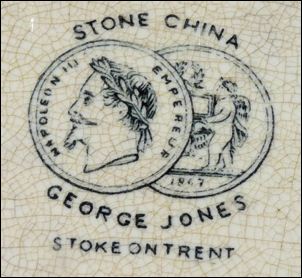
|
George Jones won a medal at the Paris Exhibition in 1867 |
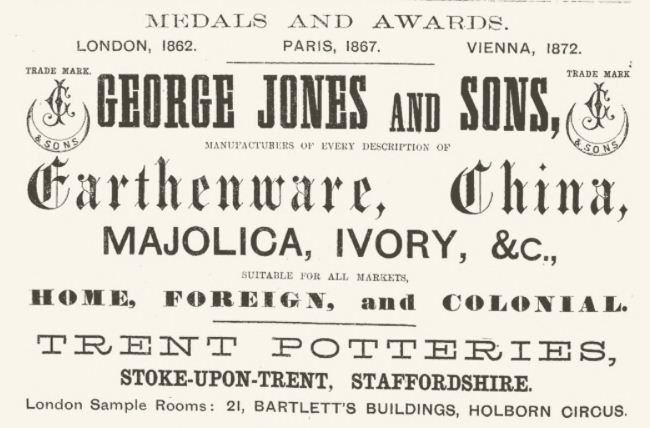
George Jones
and Sons
Manufacturers of every description of
Earthenware, China, majolica, Ivory, &c.,
Trent Potteries
Stoke-upon-Trent, Staffordshire
The Pottery Gazette, February 2nd 1880
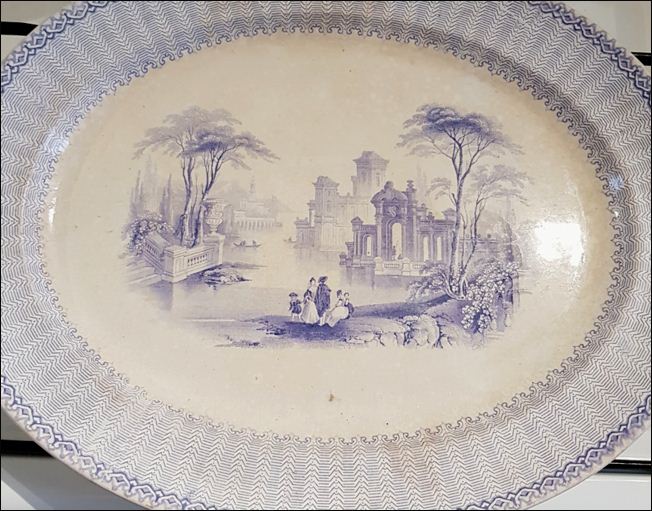 blue & white transferware platter |
|
1861-73
photos courtesy: MaryAnn Seymour, NSW Australia
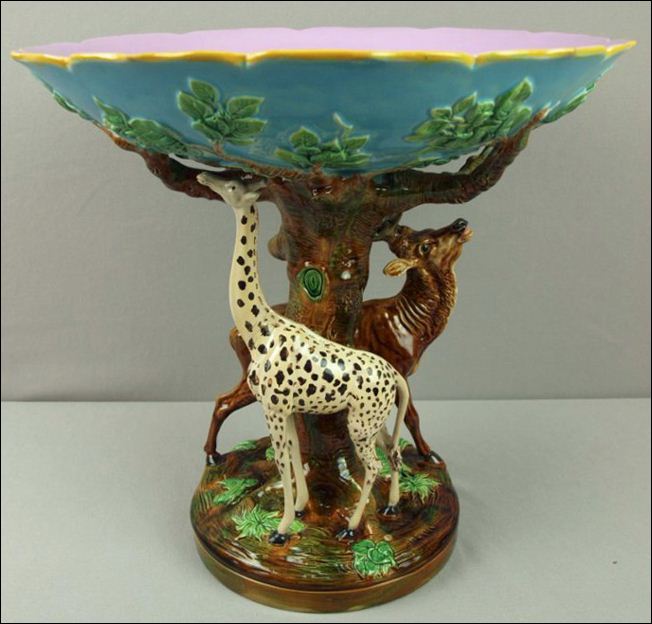
Majolica compote with giraffe
and antelope
|
Geroge Jones was a prolific manufacturer of majolica. The business produced a wide range of ware of sufficient quality to rival Minton and Wedgwood. The Majolica International Society provides more information on George Jones |
 Ironstone bowl The bottom is marked in black "Stone China George Jones Stoke - upon - Trent" with a lion and unicorn on either side of a crest. There is also an impressed "Ironstone George Jones Stoke on Trent" in an Oval. |
 5" high urn by George Jones & Sons and sold by Tiffany & Co. New York. |
|
|
|
 red transferware ironstone plate in the classic ABBEY pattern |
|
|
|
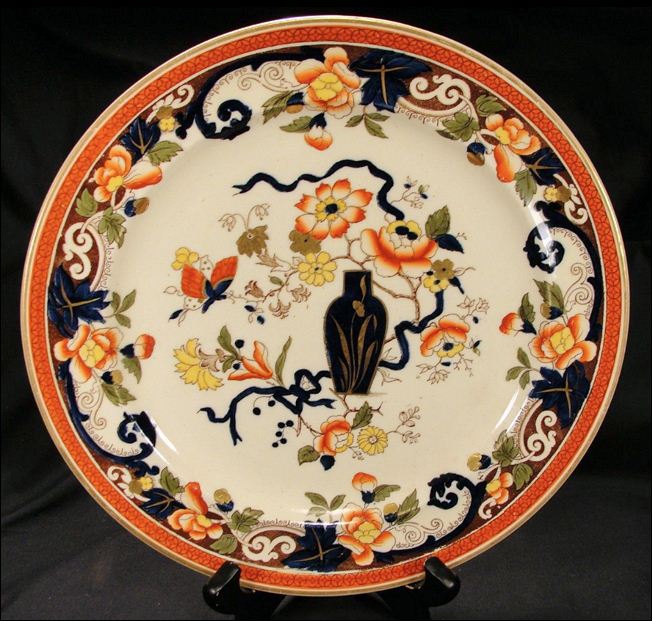
plate in the Sutherland Japan
pattern
Marks and initials used on ware for identification:
| Early George Jones majolica
was marked with the impressed superimposed letters GJ contained within a
circle. In 1873, a crescent inscribed with "& SONS" was
added beneath the initials.
Many pieces also have a small unglazed area or "thumbprint" which has a pattern number written in black ink. Often ware also bear a British registry mark. |
George Jones
c.1861-73
GJ
c.1872 - 1891
GJ & Co
c.1872 - 1891
GJ & SONS
"& Sons"
was added from 1873
CRESCENT
the trade name Cresent
was registred in 1873
although it may have been used before that date
STONE CHINA
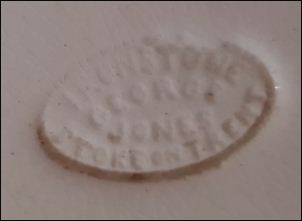
Ironstone
Gerorge Jones
Stoke-on-Trent
c.1861 - 1873
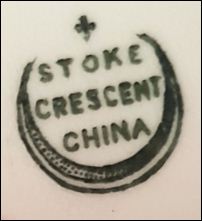 Stoke Crescent China c.1872 - 1891 this mark appeared on a plate with the registration number 826 - which means the pattern was registered in 1884 |
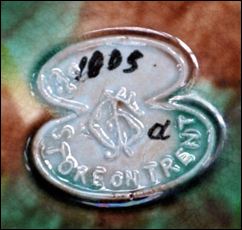 GJ Stoke-on-Trent c.1861 - 1873 moulded mark from a majolica dish Rarely seen is a raised two lobed cartouche with STOKE ON TRENT below the initials and the pattern number in ink above. |
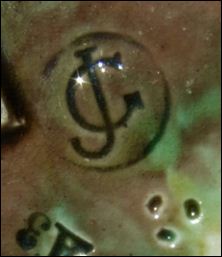 JG c.1861 - 1873 as either an impressed or moulded mark The monogram only (i.e. GJ without the crescent) used c.1861-72 when the company was "George Jones" (without the "& SONS") |
c.1861 - 1873 Some marks incorporate "Stoke-upon-Trent" and / or "Stone China" click for more on the use of the Royal Arms
|
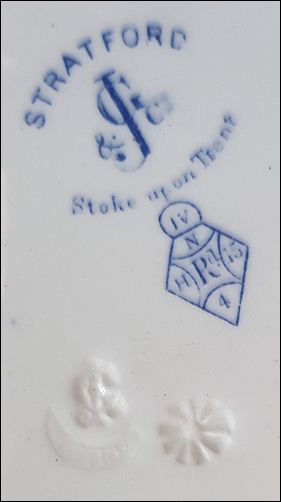 Stratford is the pattern name The registration diamond gives a date for the registration of the pattern as 5th April 1864 |
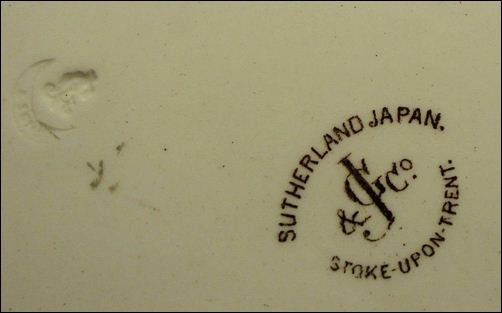 Sutherland Japan is the pattern name |
GJ & Co
Stoke-upon-Trent
these printed marks also have the
impressed crescent mark with '& Sons' this would indicate that
the ware was produced around 1873 when it was changing from '& Co' to '&
Sons'
|
c.1873 - 1907 an early George Jones & Sons mark (post 1873) |
without 'ENGLAND' - |
with 'ENGLAND' - |
|
| Note the use of "ENGLAND" which generally indicates a date post 1891 |
BRIAR is the pattern name.
Note the introduction of the crescent shape but without the word "CRESCENT" Printed mark on base and diamond registration mark for 16th September 1881 therefore this mark was after that date. |
diamond registration mark for 1883 therefore this mark was after that date |
|
The ABBEY pattern was manufactured by GEORGE JONES AND SONS beginning in 1901. This pattern was originally known as ABBEY WREATH and had been produced by WILLIAM ADAMS in the 1840s. GEORGE JONES bought many of the ADAMS patterns in 1861.
|
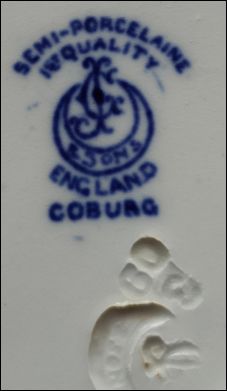
Semi-porcelaine
1st Quality
G J & Sons
England
the impressed "3 09"
is the month/year of manufacturer
- in this instance March 1909
COBURG is the pattern name
|
Mark found on an eight sided plate - plate was made for & sold by Marshall Field & Co. Chicago. Likely to have been produced by George Jones & Sons |
|
c.1874-1924 Example of impressed mark |
|
|
With the use of "MADE IN ENGLAND"
|
post 1920 mark |
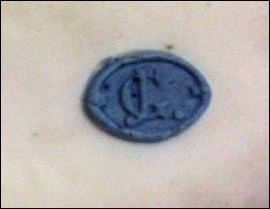
| this mark 'JG' on a raised blue pad
can be confused as 'GJ' - but it has no
connection wth George Jones,
it was used by Jean Gille of Paris, France from c.1840's to 1868
|
click the picture for more on the Crescent Works
questions/comments/contributions? email: Steve Birks